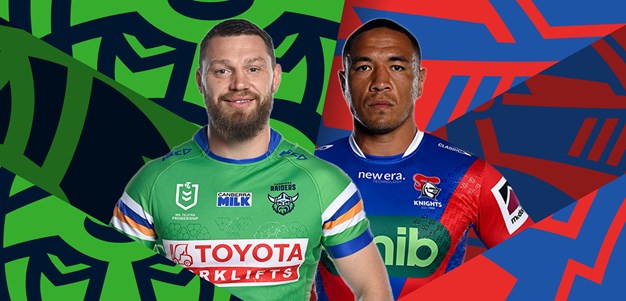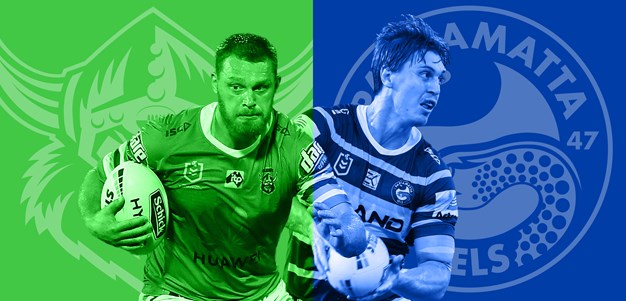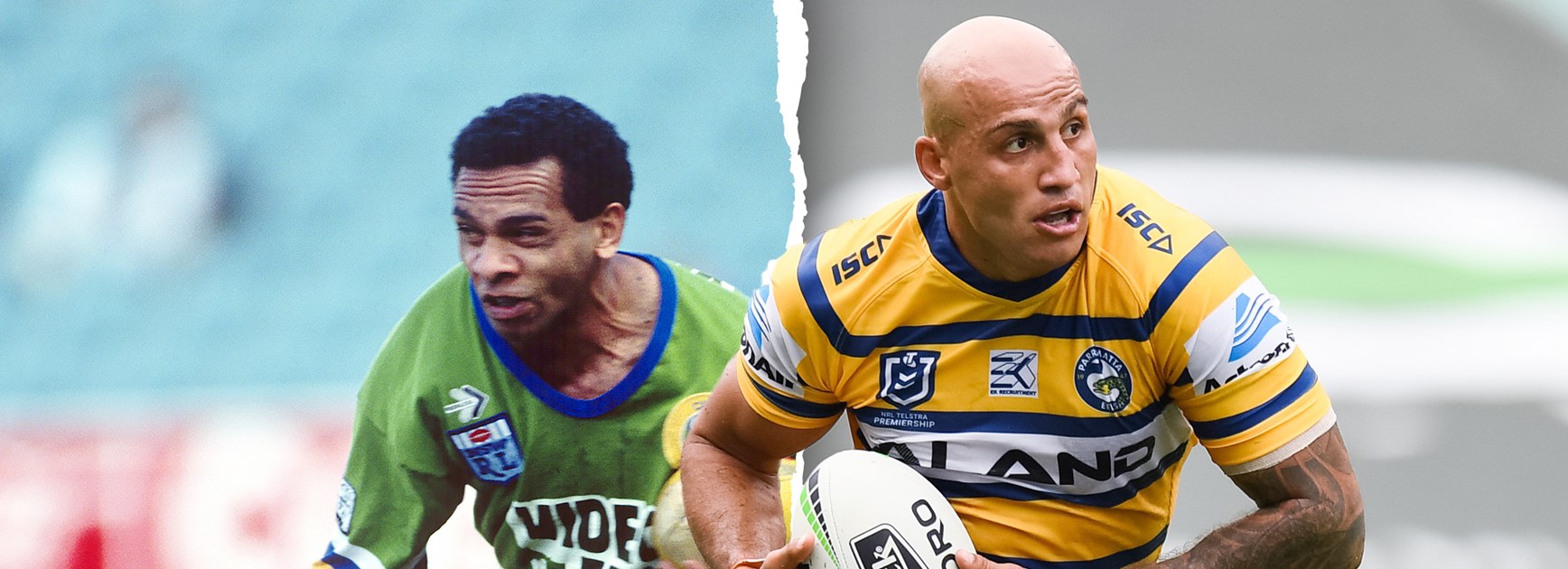
From John "Chicka" Ferguson to Blake Ferguson – nothing else needs to be said when talking about the evolution of wingers in the NRL.
These days there's no more rag-dolling over the sideline, no more touching the ball just five or six times in a game, no more staying confined to within a metre or two of the sideline.
Today's wingers are your seventh forward in a team, starting sets.
They touch the ball around 20 times per game - almost as much as fullbacks. And they are about 20 kilograms heavier.
Parramatta coach Brad Arthur says the Eels training staff even fattened up George Jennings in 2018 to around the 100-kilogram mark. It was a ploy to try to make up for the loss of Semi Radradra at the end of 2017.
So when did the bulky winger trend start?
"I don't know the answer to that," Arthur told NRL.com.
"But I do know that when we had Semi he made a big difference to us – and we missed that.
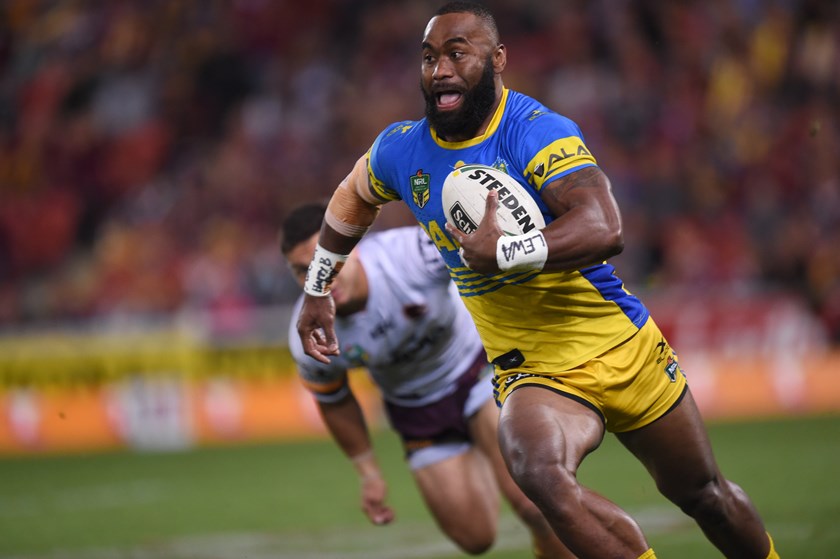
"For us last year we had George doing a bit of it on his own. We got George to put on some extra weight and get to 100kg for that purpose – to help us out of the back field.
"This year we've got George but obviously Fergo, who is 106-107 kilos and Maika [Sivo], who is 108 kilos.
"All those guys are lean, with great skin folds, so they've got leg speed.
"Sometimes on that kick-chase with a staggered line to work with as well, they win those early play-the-balls for you and that makes a massive difference."
Roosters prop Jared Waerea-Hargreaves still admires the job Ferguson did for the Roosters in 2018 on their way to the Telstra Premiership trophy.
"They are the hardest carries of the game – coming out of your own end," he said.
"You respect players that do them and do them well and do them consistently."
It seems what has happened is that clubs are trying to keep their middles as fresh as they can and have consequently taken out the little wingers. You could add small halves to that list as well - those body types are virtually extinct in the game.
Raiders coach Ricky Stuart won the 1989 and 1990 premierships with "Chicka" Ferguson. He won the 1994 premiership with "small men" Ken Nagas and Noa Nadruku on Canberra's wings.
"I think it happened when we started to go full-time training and everybody - especially our middle forwards – became much fitter and could sustain a lot more energy in things like chasing the kick," Stuart told NRL.com.
"Once they chased the kick, it's not just tackle one but probably your first three tackles coming out deep into your end of the footy field, bigger wingers and outside backs became more of a priority than guys who were just pure speed.
"The days of Chika Ferguson there was a lot more unstructured defence on kick-chase. There was a lot more doorsteps in the line, or tired forwards that you could attack through speed. So the importance wasn't there for big men."
Stuart doesn't try to bulk up his wingers in the off-season.
"No because they're naturally big and explosive. That's part of clubs' recruitment policy when they go looking for outside backs and wingers. They like to see that big body who still has good speed," Stuart said.
He didn't recruit Jordan Rapana, also 100kg, although they both started at the Raiders as coach and player in 2014. But he's been there to see him score 62 tries in 94 games.
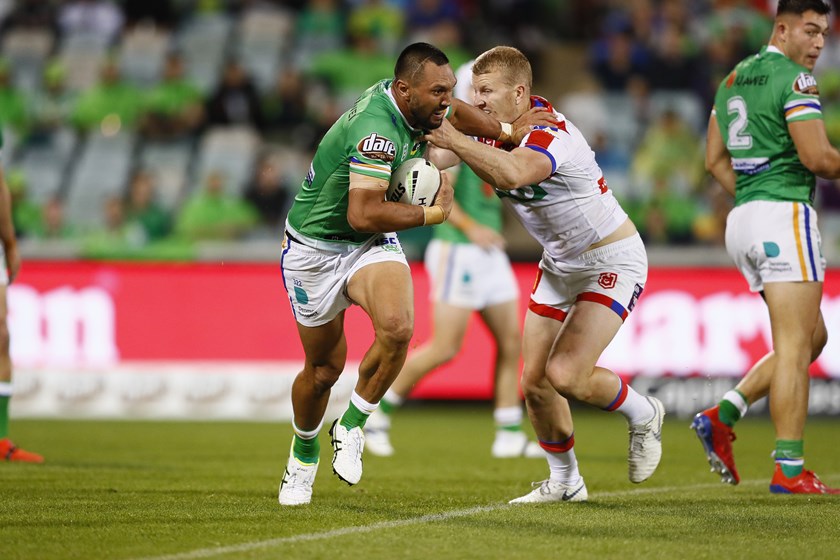
"Not only do they help your work in the middle, they score points for you on the outside too," Stuart said.
Arthur claimed big wingers were just common sense, given today's statistics.
"Fifty per cent of the game is on the back of kick-returns, so they're involved in half of the time you start your sets off," he said.
"A bigger body with good leg speed is harder to handle and helps how far you return the ball upfield, and how far your forwards have got to come back behind the ball to get it.
"If they don't have to come back as far, they've got more energy."
Eels half Mitch Moses, who is only 24, has noticed the metamorphosis in his teammates on the flanks.
"The wingers have changed a lot. You need those big bodies coming out of the back field, carrying the ball," Moses said.
"The defence these days and how hard it is to break the line, the forwards can’t do all the tackling and then expect them to make all the metres off the beginning of sets.
"Having those big wingers helps our front row enormously."




